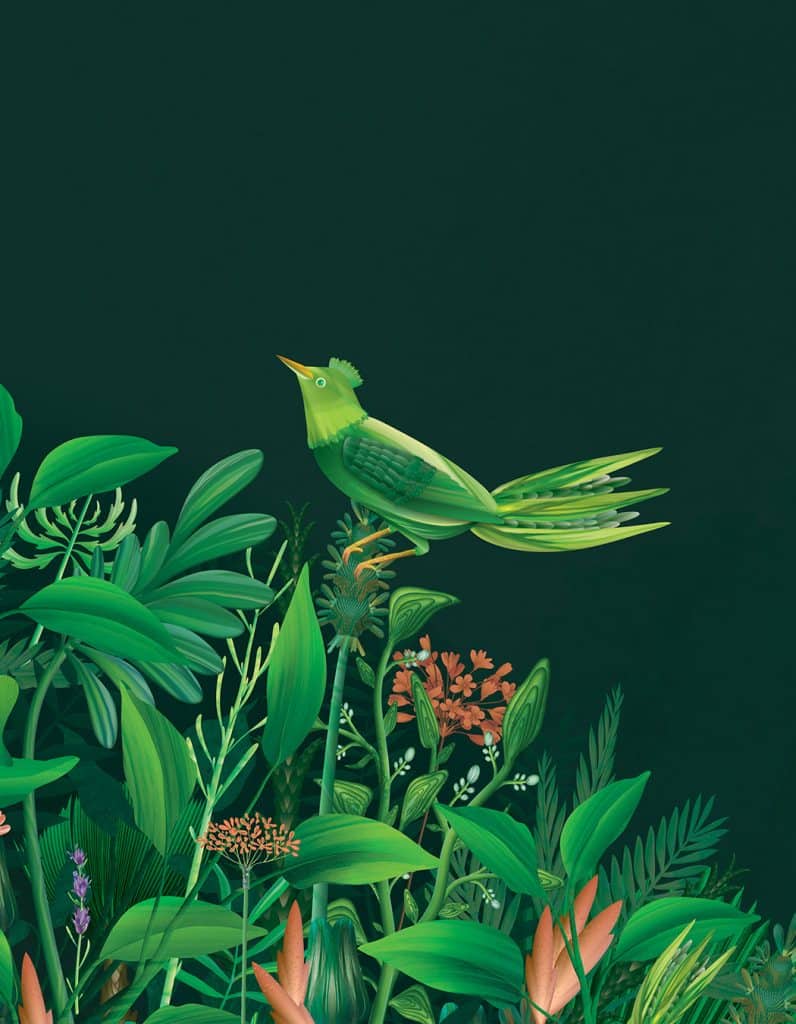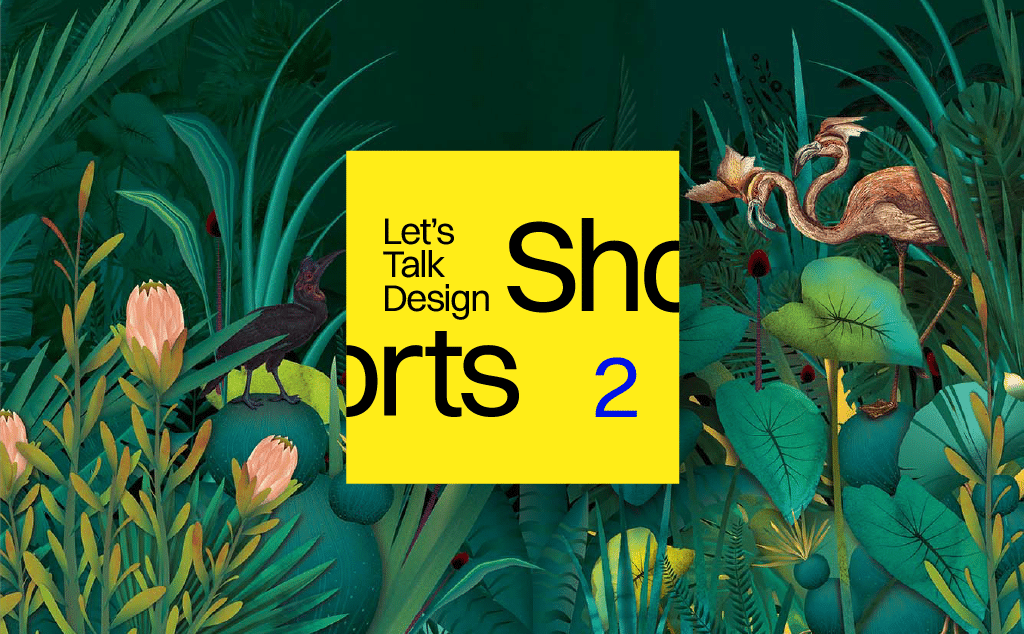In this second episode of Let’s Talk Design Shorts, I ask 6 questions to London-based designer illustrator Xavier Segers.
Episode 2 of Shorts is available on
YouTube Spotify Apple Podcasts Google Podcasts



Transcript
Timothy Helmer: [00:00:00] Hi, and welcome to Shorts, our short version of Let’s Talk Design, where I, Timothy, interview designers to find out what makes them tick. In this second episode, I ask six questions to Xavier Segers, a Belgian designer illustrator living in London. So Xavier, what inspired you to pursue a career in illustration?
Xavier Segers: Originally, I never thought I would have a career in illustration. I started working as a graphic designer in an ad agency in Belgium. And like many designers will know that work in advertising is that you need to be a jack of all trades. You need to be very versatile. You need to be able to do many different styles and techniques depending on the project you’re working on.
And sometimes I would get this art request to do an illustration here or there. At the time I was working for Famous, now called Famous Grey, and they just changed offices and they moved into this ex-monastery. And there was a long corridor with [00:01:00] big windows, and I got tasked to make stained glass illustrations because they wanted stained glass windows in their hallway.
It ended up being just foil because stained glass windows are very expensive. And when that project was finished, I just placed it online. And another agency called Not Before 10 that did interior architecture asked me to make bespoke wallpaper for this wine bar in Antwerp. And it was also the first time for me to do something like this.
And when that was finished, I also put that online and I got loads of traction. I got a Behance feature. Many blogs reposted it and that’s how the ball started rolling and that’s how I got more and more requests as an illustrator.
Timothy Helmer: What are some of the current challenges facing illustrators today and how are you navigating them?
Xavier Segers: I think there are definitely general challenges we all face as creatives. Questions like… Am I able to make a living with what I do? And am I happy turning my passion into [00:02:00] a full-time job? Also, should I go freelance or full-time? But with illustrators, it’s also depending on what specialization they have.
The process of doing children’s book illustrations or being an editorial illustrator for a newspaper with tight weekly deadlines is a whole different experience and has its own specific challenges. So depending on what direction you’re going to, the big question usually is where is my next job coming from.
Where am I getting my assignments from? Do I feel actually happy doing all the paperwork and price negotiations with the clients myself? Or should I go with representation? I think the biggest thing that we all need to be is well informed, knowing your rights and knowing that things you create, and your illustrations have also their rights and the way they are used and the way they are used commercially has a big impact on the price.
And sadly enough, this is usually overlooked. So I tried to inform myself and I joined a few associations. I also joined [00:03:00] like local creative communities. So for me, getting informed by talking to professionals and talking to my peers really helped me better understand why I should be doing as an illustrator and what my rights are.
So I think the biggest challenge is finding your place in the world and knowing what your rights are.
Timothy Helmer: How do you promote yourself as an illustrator?
Xavier Segers: I think it’s super important to show your work to the outside world, but I can understand depending on what kind of person you are. It’s not always easy.
Everybody feels comfortable showcasing their work online or in real life. I know many creators who feel anxious about sharing their work, even on Instagram, making a post can paralyze them. But what I’ve learned Early on in my career is that perfection doesn’t exist. And if you need to wait until you think you have the perfect image, you can wait forever.
So it’s like chemistry. If you keep all the elements just boxed up separately, [00:04:00] you can never create a reaction. So I think more people should share the work and celebrate it. And you never know who’s looking and it could lead to a potential job or an assignment. Personally, I’ve gotten good results using Instagram and Behance.
And participating in exhibitions and illustration fairs has also helped me get a new audience. Entering award shows has helped my, helped me and my work to be seen on a larger and international scale. But there are so many different ways to promote yourself. Like, why don’t you write an article, or have a blog on LinkedIn or create assets for a sock site.
The bottom line, it’s important to know who you want to reach and know where your target audience is.
Timothy Helmer: Can you share a memorable story about your experiences as an illustrator in London?
Xavier Segers: Creating the campaign image for the BAFTA awards and designing all of the assets were certainly memorable experiences.
The main image was going to be a cross-section of a [00:05:00] tree showing all of the rings and one ring was going to be in gold symbolizing the winning year of an actor’s career. Originally, I was going to ink up a chopped-down tree trunk and make prints from it. But due to timings, logistics, and access to sustainable pieces of wood, I ended up drawing it.
And I was truly terrified because I never had to Draw something so detailed like that before and failing was the option. Also, I didn’t want to lose the opportunity to work for such a prestigious client. And in the end, it all came together. And I felt like I really combined all of my skills from being an art director, graphic designer, illustrator for this project.
It was great designing all of the assets like the invitations and envelopes catalogues and seeing it all being used during the ceremony and the PR. It ended up being recognized by the World Illustration Awards and the illustration even ended up on somebody’s arm as a tattoo.
Timothy Helmer: How do you maintain originality in your work while also [00:06:00] catering to client requests?
Xavier Segers: My way of working is usually very split. When I do my logo and identity work for clients, I feel like it really needs to reflect them of course and not me. It needs to reflect their core values, their target audience, and their business in general. So it’s very crucial. So they. Have this bespoke look and feel that they can really own on every level and each touch point they put out in the world when I get clients that come to me for my illustrations or personal projects, then I instinctively know that I can rely on and use my own specific style and references of my visual universe.
Also, I think it’s important for creatives not to go drink from the same watering hole as everybody else. For example, social media platform sites like Instagram and, and Pinterest, they’re all dictated by algorithms. So what we are seeing is just like trending things. And if we go there for inspiration, we might end up just regurgitating something that looks very similar to what’s out there already.[00:07:00]
And also lots of clients these days are very proactive. They will come with loads of images and mood boards, but I think it’s up to us to really cut through the noise and filter what is relevant and what could make a unique result for the client.
Timothy Helmer: How do you think AI will influence illustration?
Xavier Segers: I think AI will definitely have a major impact and influence on illustration in the future.
Many people are focusing on the very negative aspects of it, but I think as creators we should always embrace emerging technologies and familiarize ourselves with it. We already are seeing lots of mass integration of AI tools in our software. I definitely think to avoid certain negative outcomes, there should be an international legal framework about the usage of AI and the use of the content that people create with it.
It’s definitely opening up a big conversation, about ownership and copyright and [00:08:00] originality. But I think the biggest positive outcome is that a big, source of income might change for illustrators Instead of licensing made illustrations, we can license specific styles of illustrators and when, for example, if an art director wanted to work with an illustrator, but the illustrator is fully booked.
He can maybe license the style of this illustrator. So every time this art director creates content or illustrations based on the style of this illustrator, the illustrator will get paid. So I do think it might have a very positive outcome on the diversification of the income of illustrators.
Timothy Helmer: Thanks for listening and watching. You can subscribe to the series on YouTube and your favourite podcast app. Feel free to share tips and feedback on those platforms. Your feedback is essential to improve this series. Let’s talk soon.[00:09:00]

